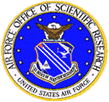Computing with Fruit Fly Brain Circuits
The FlyBrainLab (FBL) is an ideal interactive computing platform for exploring the molecular architecture and, executable models of fly brain circuits and local processing units. FBL Utility and Circuit Libraries support these explorations.
We describe below some of the main ongoing projects with a focus on investigating the graph structure and the functional logic of fruit fly brain circuits and local processing units.
The Graph Structure of the Connectome and Synaptome Datasets
The connectome and synaptome of the fruit fly brain datasets exhibits a wealth of statistics that are awaiting to be harnessed.
The Functional Logic of the Odor Information Processing Circuits
In broad terms, our focus here is on investigating the odorant transduction and processing in the early olfactory system of the fruit fly consisting of the antenna, antennal lobe, mushroom body and lateral horn local processing units and circuits.
The Functional Logic of the Visual Information Processing Circuits
In broad terms, our focus here is on investigating the visual representation and processing in the retina, lamina, medulla, lobula and lobula plate local processing units and circuits.
The Functional Role of the Central Complex of the Fruit Fly Brain
Our focus here is on investigating the functional role of the central complex (CX), a set of neuropils in the center of the fly brain that have been implicated as playing an important role in vision-mediated behavior and integration of spatial information with locomotor control.
Utility Library for the Fruit Fly Connectome/Synaptome
FlyBrainLab offers a number of utilities to explicate the graph structure of neural circuits from raw connectome and synaptome data. The current FlyBrainLab Utility Library includes:
- NeuroEmbed (Cell Classification and Cell Type Discovery),
- NeuroSynapsis (High Level Queries and Analysis of Connectomic and Synaptomic Data),
- NeuroGraph (Connectivity Pattern Discovery and Circuit Visualization Algorithms),
- NeuroWatch (3D Fruit Fly Data Visualization in Jupyter Notebooks),
- NeuroMetry (Morphometric Measurements of Neurons).
A brief description of the FlyBrainLab Utility Library can be found in Appendix 2 of
1. Aurel A. Lazar, Tingkai Liu, Mehmet K. Turkcan, and Yiyin Zhou, Accelerating with FlyBrainLab the Discovery of the Functional Logic of the Drosophila Brain in the Connectomic and Synaptomic Era, eLife , February 2021.
Circuits Library for Analyzing, Evaluating and Comparing Fruit Fly Brain Circuits
In conjunction with the capability of visually constructing circuits enabled by the NeuroMynerva front-end, speeding up the process of creating interactive executable circuit diagrams can substantially reduce the exploratory development cycle. The current FlyBrainLab Circuit Library includes:
- CXcircuits (Library for Central Complex Circuits),
- EOScircuits (Library for Larva and Adult Early Olfactory Circuits),
- OlfTrans (Library for Olfactory Transduction in Olfactory Sensory Encoding).
- VisTrans (Library for Phototransduction in the Retina).
A brief description of the FlyBrainLab Circuit Library can be found in Appendix 3 of
1. Aurel A. Lazar, Tingkai Liu, Mehmet K. Turkcan, and Yiyin Zhou, Accelerating with FlyBrainLab the Discovery of the Functional Logic of the Drosophila Brain in the Connectomic and Synaptomic Era, eLife , February 2021.
The Bionet Group is supported by grants from
 |
 |
 |
 |